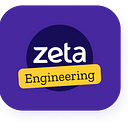Top Tips to Integrate ChatGPT in DDLC
Technical documentation is critical to product adoption. It facilitates communication between developers and end-users by providing comprehensive information on software usage and implementation. We had discussed the documentation taxonomy in an earlier post — Information Architecture for Technical Documentation.
The Document Development Life Cycle (DDLC) provides a structured approach to creating and managing technical documentation. At Zeta, our DDLC looks somewhat like this:
The primary source of knowledge and validation for information developers are through Subject Matter Experts (SME). After incorporating the SME’s feedback, the document moves to the editorial review phase, which is the mainstay of this blog.
It is also a phase that often becomes a bottleneck due to the limited availability of editors and multiple ongoing projects. The process involves multiple iterations of feedback and revision, which can further prolong the phase. Maintaining consistency across projects and adhering to style guidelines adds another layer of complexity.
ChatGPT to Overcome Editorial Bottlenecks at Zeta
Manual editorial work is crucial in our technical communication for technical accuracy, clarity, and adherence to style guidelines, but for us, it caused publishing delays due to concurrent, critical documentation projects. To overcome such bottlenecks, leveraging an advanced language model like ChatGPT, which is designed to generate human-like responses based on the input provided, proved to be an excellent recourse!
An interesting side-note is that each one of our writers started on ChatGPT in unique ways; some using formal language, and some, vernacular language. We were pleasantly surprising to find that while ChatGPT did not initially understand vernacular English instruction that well, it learned and improved over time!
Main Outcomes
The most noticeable outcomes of this exercise were:
- Faster turnaround of documentation drafts
- Near elimination of peer review in our maintenance projects
- More homogenized, standardized language, even in multi-author, deep-tech projects
Top 4 Benefits
The biggest advantages of using ChatGPT are:
- Improved Efficiency: ChatGPT does a tidy job of cleaning up content thereby readying a high quality documentation even before the editor evaluates it. This accelerates the editorial review process and post-edit turnaround is faster
- Enhanced Consistency: ChatGPT ensures consistent language usage and formatting throughout the documentation. This is especially useful in multi-author projects
- User-focused Documentation: ChatGPT often provides valuable suggestions and recommendations, making the output more targeted and creating user-friendly content
- Error Detection and Correction: ChatGPT easily identifies language-related errors with grammar, punctuation, spelling, and inconsistencies in phrasing, maintaining the quality and accuracy of the documentation
Top 3 Limitations
You may face the following limitations when using ChatGPT:
- Lack of Domain-Specific Knowledge: ChatGPT may struggle with industry-specific terminology or specialized knowledge, potentially leading to incomplete or inaccurate documentation. This is especially true for deep-tech, industry-specific, first-of-its-kind offerings
- Inability to Test Software: ChatGPT cannot test software or validate its functionality, limiting its effectiveness in providing instructions for procedural documentation. In fact, it may add/remove lines of code unnecessarily
- Limited Ability to Understand Context: ChatGPT needs help in creating a domain-specific knowledge base in absence of which it may misinterpret context, leading to errors or ambiguity in the generated content. Seasoned editors on the other hand excel in this regard.
Comparison: Grammarly vs. ChatGPT
We conducted a pilot on one of our new product documentation sites last quarter. Our main findings from the output generated from the same source content, using Grammarly vs. ChatGPT are shared in the table below keeping the focus of the study on efficiency, accuracy, and style.
Final Takeaway
Integrating ChatGPT into the editorial review process enhances efficiency and productivity by streamlining operations and saving time for information developers, SMEs, and editors. It conducts basic proofreading and grammar checks better than commonly used language tools.
As a downside, although ChatGPT generates human-like responses, its capacity to grasp context and provide suitable suggestions, especially in deep-tech context, is limited. To achieve an optimal outcome, a well-balanced approach is imperative.
One can seamlessly incorporate ChatGPT as a supplementary tool to relieve editors of mundane tasks such as spelling, punctuation, and grammar validation enabling them to focus more on consistency, technical nuances and content flow ensuring that the published content meet the highest standards of quality, accuracy, and effectiveness.
A Ready-Reckoner to Maximize the Benefits of ChatGPT in DDLC
Feel free to download and use this ready-reckoner that we use quite often at work nowadays.
Want to Learn ChatGPT Basics?
Here are a few courses that we recommend:
Video and Illustrations: Sumon Mondal
Author: Aboobackeres
